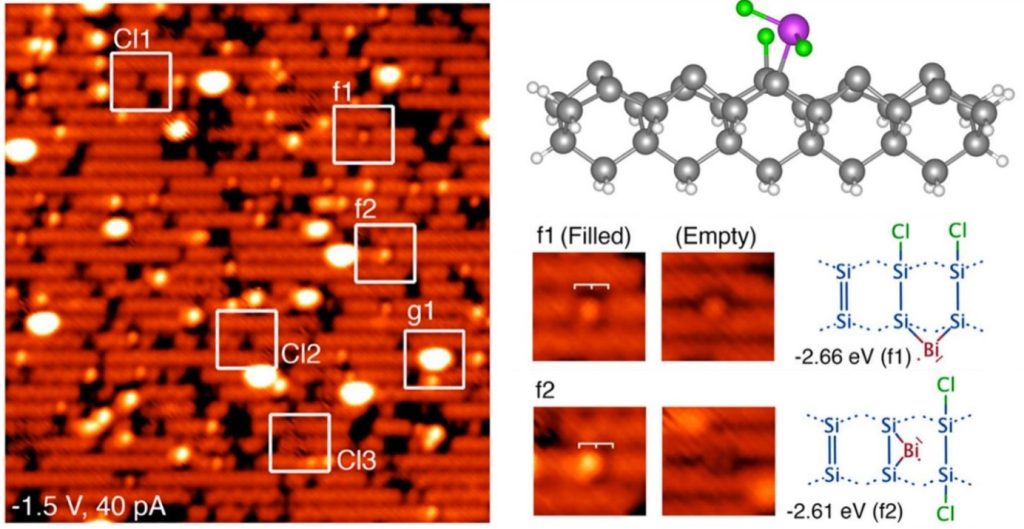Chemical Pathways to Atomic-Scale Device Fabrication with Bismuth

Bismuth trichloride as a molecular precursor for silicon doping
Atomic-scale device fabrication in semiconductor materials is a developing field with potential for revolutionary payoffs in quantum technologies. One key challenge in realizing this potential is the development of suitable precursor molecules for the introduction of exotic impurity elements like bismuth.
In new research published in Applied Physics Letters,[1] a team of scientists from the London Centre for Nanotechnology (LCN) at UCL has focussed on the precursor chemistry of bismuth trichloride (BiCl3) on a silicon surface. Understanding this chemistry is a critical step in incorporating individual bismuth atoms at exact locations in a silicon chip. Using atomic-resolution scanning tunneling microscopy (STM) measurements and density functional theory calculations, the team has demonstrated that BiCl3 decomposes completely at room temperature on the Si(001) surface, providing individually adsorbed Bi atoms. This significant finding suggests that BiCl3 is a good candidate for a bismuth precursor compound, enabling the incorporation of single bismuth atoms into a silicon lattice with sub-nanometer precision.
This research not only highlights the ongoing collaborative efforts within the LCN and Thomas Young Centre but also underscores the importance of materials science research in advancing the development of quantum technologies through atomically precise device fabrication. The next stage of the research will be to demonstrate that single Bi atoms can be deterministically positioned in Si(001) by combining BiCl3 adsorption with STM-based H-lithography.
[1] E. A. S. Lundgren, R. Conybeare, T. J. Z. Stock, N. J. Curson, O. Warschkow, S. R. Schofield, Appl. Phys. Lett. 122, 151601 (2023)
